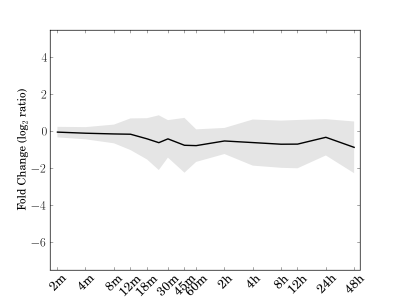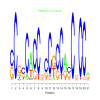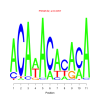Cre02.g083850.t2.1
Details for Cre02.g083850.t2.1 -
GO Terms: NA
Go to Gene Page: Cre02.g083850.t2.1
Phytozome Genomic Region

|
Cre03.g174850.t1.2 Polyketide cyclase/dehydrase and lipid transport superfamily protein
Details for Cre03.g174850.t1.2 - Polyketide cyclase/dehydrase and lipid transport superfamily protein
GO Terms: NA
Go to Gene Page: Cre03.g174850.t1.2
Phytozome Genomic Region

|
Cre03.g197150.t1.1
Details for Cre03.g197150.t1.1 -
GO Terms: NA
Go to Gene Page: Cre03.g197150.t1.1
Phytozome Genomic Region

|
Cre03.g197300.t1.1
Details for Cre03.g197300.t1.1 -
GO Terms: NA
Go to Gene Page: Cre03.g197300.t1.1
Phytozome Genomic Region

|
|
Cre04.g232902.t1.1
|
Cre05.g238850.t1.2
Details for Cre05.g238850.t1.2 -
GO Terms: NA
Go to Gene Page: Cre05.g238850.t1.2
Phytozome Genomic Region

|
Cre06.g278160.t1.1 CAP (Cysteine-rich secretory proteins, Antigen 5, and Pathogenesis-related 1 protein) superfamily protein
Details for Cre06.g278160.t1.1 - CAP (Cysteine-rich secretory proteins, Antigen 5, and Pathogenesis-related 1 protein) superfamily protein
GO Terms: NA
Go to Gene Page: Cre06.g278160.t1.1
Phytozome Genomic Region

|
Cre06.g286000.t1.2
Details for Cre06.g286000.t1.2 -
GO Terms: NA
Go to Gene Page: Cre06.g286000.t1.2
Phytozome Genomic Region

|
|
Cre07.g338150.t1.1 MEI2-like protein 5
|
Cre09.g387726.t1.1 aspartate aminotransferase 3
|
|
Cre09.g388650.t1.1 Adenylate/guanylate cyclase
|
Cre09.g403150.t1.1 Protein of unknown function (DUF506)
Details for Cre09.g403150.t1.1 - Protein of unknown function (DUF506)
GO Terms: NA
Go to Gene Page: Cre09.g403150.t1.1
Phytozome Genomic Region

|
Cre11.g483450.t1.1
Details for Cre11.g483450.t1.1 -
GO Terms: NA
Go to Gene Page: Cre11.g483450.t1.1
Phytozome Genomic Region

|
Cre12.g487700.t1.2
Details for Cre12.g487700.t1.2 -
GO Terms: NA
Go to Gene Page: Cre12.g487700.t1.2
Phytozome Genomic Region

|
|
Cre12.g508000.t1.1 hydroxyproline-rich glycoprotein family protein
|
Cre12.g537850.t1.2 Protein of unknown function (DUF2930)
Details for Cre12.g537850.t1.2 - Protein of unknown function (DUF2930)
GO Terms: NA
Go to Gene Page: Cre12.g537850.t1.2
Phytozome Genomic Region

|
Cre12.g547500.t1.2
Details for Cre12.g547500.t1.2 -
GO Terms: NA
Go to Gene Page: Cre12.g547500.t1.2
Phytozome Genomic Region

|
Cre12.g560550.t1.1 formyltransferase, putative
|
|
Cre13.g579582.t1.1 starch synthase 3
|
Cre13.g603500.t1.2
Details for Cre13.g603500.t1.2 -
GO Terms: NA
Go to Gene Page: Cre13.g603500.t1.2
Phytozome Genomic Region

|
|
Cre15.g637100.t1.2 ubiquitin family protein
|
Cre16.g654250.t1.2
Details for Cre16.g654250.t1.2 -
GO Terms: NA
Go to Gene Page: Cre16.g654250.t1.2
Phytozome Genomic Region

|
Cre16.g677750.t1.2
Details for Cre16.g677750.t1.2 -
GO Terms: NA
Go to Gene Page: Cre16.g677750.t1.2
Phytozome Genomic Region

|
Cre16.g684900.t1.1
Details for Cre16.g684900.t1.1 -
GO Terms: NA
Go to Gene Page: Cre16.g684900.t1.1
Phytozome Genomic Region

|
|
Cre17.g708400.t1.2
|
Cre17.g719950.t1.2
Details for Cre17.g719950.t1.2 -
GO Terms: NA
Go to Gene Page: Cre17.g719950.t1.2
Phytozome Genomic Region

|




Comments